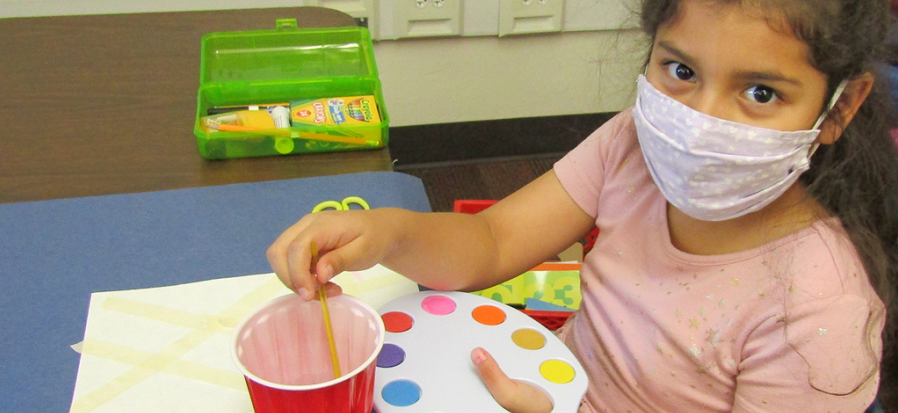Since early 2020, our educational system has drastically adapted to address the challenges from the pandemic. As we anticipate the new school year, the outlook on education looks very different. SCRI recently sat down with Paul Reville, Harvard Graduate School of Education Professor and education visionary, to capture his thinking about post-pandemic schooling in America.
Q: There’s a lot of talk about building back better in education. How do we know that K-12 education is in need of transformational change? Why can’t we keep going as-is?
Paul: We have recognized, ever since the 1983 Nation at Risk report, that our current education system is not adequately meeting the needs of students and society. We’ve just come through 25 to 30 years of intensive, expensive and energetic school reform in this country, but we’ve made relatively little progress in closing persistent opportunity and achievement gaps.
As a result, we’ve got substantial swaths of the population either dropping out or graduating without the necessary skills to be successful in careers or in college. If nothing else, we have proven during the period of school reform that exclusively focusing on school optimization is insufficient to create an equal opportunity society.
When schools closed, a lot of inequities became very apparent. People began to understand that basics like food, stable housing, health care and safety are prerequisites for any child to be ready to learn.
We have to ask ourselves, what are we going to do as communities to make it possible for all children to have opportunities that those of us with privilege provide for our own children? What are we going to do to make it possible for all children to have the basics, like food, stable housing, healthcare, optical care and dental care?
These are preconditions that would enable a child to come to school genuinely ready to learn. Other societies have been able to do that. The notion that in 20% of a child’s waking hours, schools are going to be able to level our grossly unequal playing field that is life in America is just magical thinking. And so, I think we’ve got to get over that. We can do better. I think a lot of hopeful things have emerged from the pandemic that point to some productive directions.
[Schools] had to develop an emergency response, and some of them have managed to refine that response into something beginning to approach the use of state-of-the art technology for educational purposes. Now you’ve got people rolling. How do you direct and use that momentum?
Q: How has the pandemic opened doors for meaningful change? How are key stakeholders seeing things differently now?
Paul: I think the general public perceives, with a greater sense of urgency than ever before, what children need to be successful in school and life. When schools closed, a lot of inequities became very apparent. People began to understand that basics like food, stable housing, health care and safety are prerequisites for any child to be ready to learn. Schools have always put a band-aid or temporary solution to address those needs, and when they closed, things fell apart. Schools weren’t established or structured to meet these needs.
Further, the pandemic revealed that things like Internet access, family engagement, access to enrichment and mental health care all have an enormous impact on the capacity of schools to succeed.
It’s now easier to see that a lack of basic opportunities and supports constrains many young people and their schools from being successful. So, I think this more holistic view of young people has moved to the center. This makes the current moment a time of promise. It’s almost a cliche now to say that people ought to make the best of a crisis, but that’s the opportunity we have in this moment.
Q: What are the barriers to change?
Paul: The education system is a very conservative system. We redo what we’ve always done, however unsuccessful, because it’s so locked in, politically and otherwise, that making change is very difficult and controversial. There’s hope, however.
Before the pandemic, the education industry was slow to adopt technology, with a few notable exceptions. Suddenly last March, people were catapulted into the age of educational technology. They had to develop an emergency response, and some of them have managed to refine that response into something beginning to approach the use of state-of-the-art technology for educational purposes. Now you’ve got people rolling. How do you direct and use that momentum?
The other thing that I’ll say is while we have overcome the initial inertia that keeps people doing the same thing, people are also exhausted and overwhelmed. So, in some respects, a reversion to the status quo is psychologically attractive to people. That is the real current risk we face.
Q: Keeping in mind those barriers, what transformational changes should educational leaders consider as we emerge from the pandemic?
Paul: My top priority is personalization. I often say, if we did medicine like we do education, then everybody who walks through the front door of the hospital would get the same treatment and have the same length of stay, no matter what’s actually going on with them. It doesn’t work.
I’m hoping that this pandemic and the differential effects on learning loss will finally break the one-size-fits-all model of education and allow us to move to a personalized model where we meet children where they are in early childhood and give them what they need inside and outside of school. We’d develop a success plan for each child, like keeping a running record in medicine—a profile of each child that travels with them and captures their unique educational journey.
Another area for transformative growth is relationships. We hear a lot of talk about “learning loss,” as though the problem of missed opportunities during the pandemic was merely a technical problem of pouring knowledge into kids’ heads. However, if there’s a major challenge for students coming back to school, it’s rebuilding relationships that were so suddenly and deeply fractured when schools closed.
Even before the pandemic, mental health problems, anxiety and alienation were overwhelming schools. We have to end the anonymity that is all too common in schools. Part of personalization is having a resource—navigator, coach, advocate—to follow each student and connect to their families throughout the process. Given the crisis of the pandemic, many school systems were actively reaching out to families to check in on students who were missing or unengaged. We need to rebuild that kind of connection between home and school as a partnership for children’s learning.
Q: What are some things communities and districts can do now, and who can they learn from?
Paul: I want to see children’s cabinets formed in every community. We’ve got to think more holistically about the lives of young people in the way I was discussing earlier—365 days a year, 24 hours a day, what’s going into this child’s life? A children’s cabinet brings the whole community together to think about what we need to do for young people for them to thrive and prosper.
Children’s cabinets start by identifying the unmet needs in children’s lives. Once they’ve done that, they can advocate for programs, policy and budgetary changes that address those gaps.
Some strong examples of community-based efforts are seen in the Louisville 502 organization and in Oakland’s Unified School District. Effective children’s cabinets are present in Chattanooga, Tennessee and Somerville, Massachusetts. Additionally, New York City is very enthusiastic about the children’s cabinet that they are developing.
I’m hoping that this pandemic and the differential effects on learning loss will finally break the one-size-fits-all model of education.
One way that districts can attend to relationships is in their approach to personalize learning. For example, Nashville just took a big step forward by appointing a navigator for each of its 26,000 students. The navigator is someone the family and the student can communicate with who is keeping a portfolio and helping that child move through the system. It’s possible for districts to start in very modest ways, like giving a school administrator, guidance counselor or teacher a group of kids. Maybe it’s the homeroom group but the navigator interviews each of them individually, begins to build a lasting relationship and also connects to their family.
We often say, your budget shows what you value. So, where do we see families in the school budget? Basically, they’re invisible. If we want people to take it seriously, we have to build it into the budget and make expenditures on personnel. Whether it’s additional teacher time or a family coordinator in each building, someone should be paid to spend time connecting to families, doing family visits, welcoming families into schools and following up on any school problems.
There is a lot the younger generation can do, like City Year or other corps members, to be that connective tissue between families and schools. We have a lot of research that indicates that tutoring would be a very good first step for a lot of young people. Corps members could also help families set up technology friendly environments for students to work in and things of that nature. It’s really about re-envisioning roles within schools.
We’ve got a very strong body of research proving the benefits of summer enrichment—getting active physically, meeting other peers and role models who are doing exciting things. We need to make more opportunities for those kinds of things to happen for everybody.
Q: What opportunities are you excited about right now?
Paul: The new federal money coming down is significant, and how we spend it is going to make all the difference. I think the summer presents an enormous opportunity right now. It’s particularly urgent because you’ve got students who’ve been disconnected for a long time.
We’ve long paid too little attention to summer as a powerful learning time. We’ve regarded it as a “nice to have,” not an essential. We’ve got a very strong body of research proving the benefits of summer enrichment—getting active physically, meeting other peers and role models who are doing exciting things. We need to make more opportunities for those kinds of things to happen for everybody.
I think one of the ways is to make summer a pilot for what we do during the rest of the year. Let’s get students engaged and connected in deeper learning. We can use the summer to bring the community into the classroom to engage students in solving real-life problems. We can get students working in groups to break down the notion that all of learning, achievement and measurement is based on your performance as an individual. Supporting this approach is a clear message from employers—communication, collaboration and interpersonal skills are very important to the future workforce and their hiring requirements.
Q: Finally, how does back-to-school need to look different in fall 2021?
Paul: It needs to be about rebuilding a culture that’s been crashed. I see it in my own teaching. When you’re teaching on Zoom, you can’t assume the same kinds of connections and the atmosphere that you have when you’re in person with people. Teachers and schools are going to have to be intentional about welcoming students, supporting them, engaging them and reconnecting with them while simultaneously adopting some of the features of trauma-free schools, like safety and belonging.
Our mania about learning loss needs to be secondary to helping students feel connected with a focus on having fun, moving around and hanging out together. That’s a first step. And then I think teachers also need time to catch up because we’ve been woefully neglectful in providing adequate professional development and support via teacher contracts and standard operating procedures. Teachers haven’t received enough time to incorporate some of the technology tools and methods that can be hybridized and brought into the classroom. I think teachers need the opportunity to learn how to best use these tools in meaningful ways, some of which have never been done.
Teachers and schools are going to have to be intentional about welcoming students, supporting them, engaging them and reconnecting with them while simultaneously adopting some of the features of trauma-free schools, like safety and belonging.




